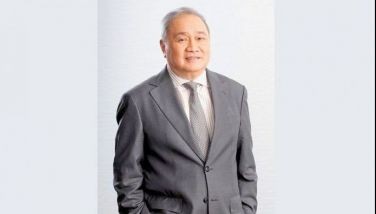PAL flies high

The advances in modern technology, especially in the telecommunications industry, have made our lives easier and communications made faster. In terms of speed of transmission, it is now a matter of split seconds we get the text message or even photographs. These technological breakthroughs have definitely improved the quality of our jobs, especially us journalists. From my own experience, I used to write my news stories with the use of a typewriter until I learned how to use the personal computer. Now, we even have laptop computers and Nokia communicators to send our stories straight to the news desks.
But modern telecommunications have also its downside, when the computer system bogs down. Although such cases of computer systems going down occur once in a while, it is really a horror story if you’re caught in that situation. We experienced one such case of computer system breakdown while our press junket group was about to fly back to
To their credit, the PAL counter at the
Despite this computer system breakdown, our PAL flight took off without delay and we arrived at the
Nonetheless, PAL obviously enjoys a good share of the passenger market in
Riding high on this impressive eight-year streak of operational profits and a three-year run of net profits, PAL will exit its receivership and from the Securities and Exchange Commission (SEC)-supervised rehabilitation before the end of the year. This was the bold target of PAL as stated by its president Jaime Bautista. PAL entered receivership in June 1998 after a series of external and internal crises, including a labor problem, that caused massive financial losses to the airline firm, shut its operations and was pushed to the brink of liquidation.
I distinctly recall how then President Joseph Estrada initially refused to intervene into this labor problem stalemate while he was still in his first few weeks into office at
In a joint report to PAL’s shareholders, Tan and Bautista agreed that it is the appropriate time to advance out of the SEC-supervised rehabilitation program given the very much-improved financial condition and the favorable outlook of the airline industry. In particular, Tan and Bautista highlighted PAL’s dramatic productivity gains for the past eight years, with the airline’s doubled revenue per employee rising by 10.5 percent yearly while passenger load factor increased from 66.1 percent to 76.9 percent, among these most notable factors.
For these feats, PAL was cited as the 6th most profitable airline in the world in 2005 by the International Air Transport Association and as the most profitable network carrier in
PAL is the only private sector flag carrier among the 10 member-states of the Association of South East Asian Nations (ASEAN). If the ASEAN wants to liberalize the airline industry to encourage tourism growth, PAL insists that other ASEAN governments must first withdraw all subsidies to their respective flag carriers to ensure fair competition. State subsidies distort the competitiveness in the airline travel industry. PAL has reiterated this position to the Philippine government to officially propose this to other ASEAN governments in the ongoing regional multilateral air traffic rights negotiations.
Despite this undue advantage by some of its airline rivals in the region, PAL has kept its fleet soaring high without any help from the government. We had a smooth flight back to Manila and the only bumps we had in that PAL ride from Hong Kong was in our take-off and landing at the crude runway of our airport here.
- Latest
- Trending






























